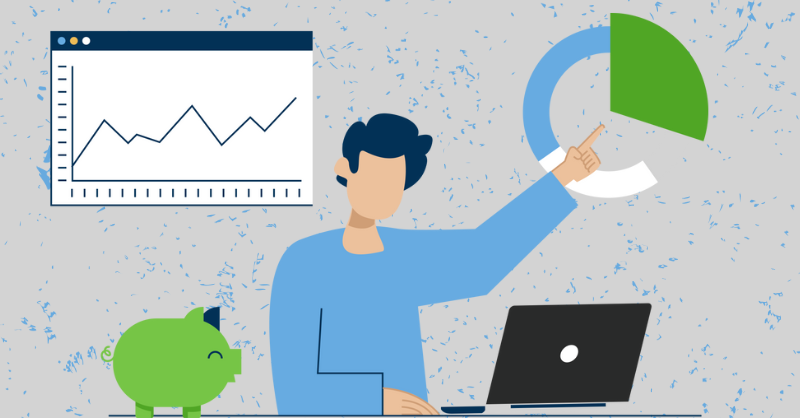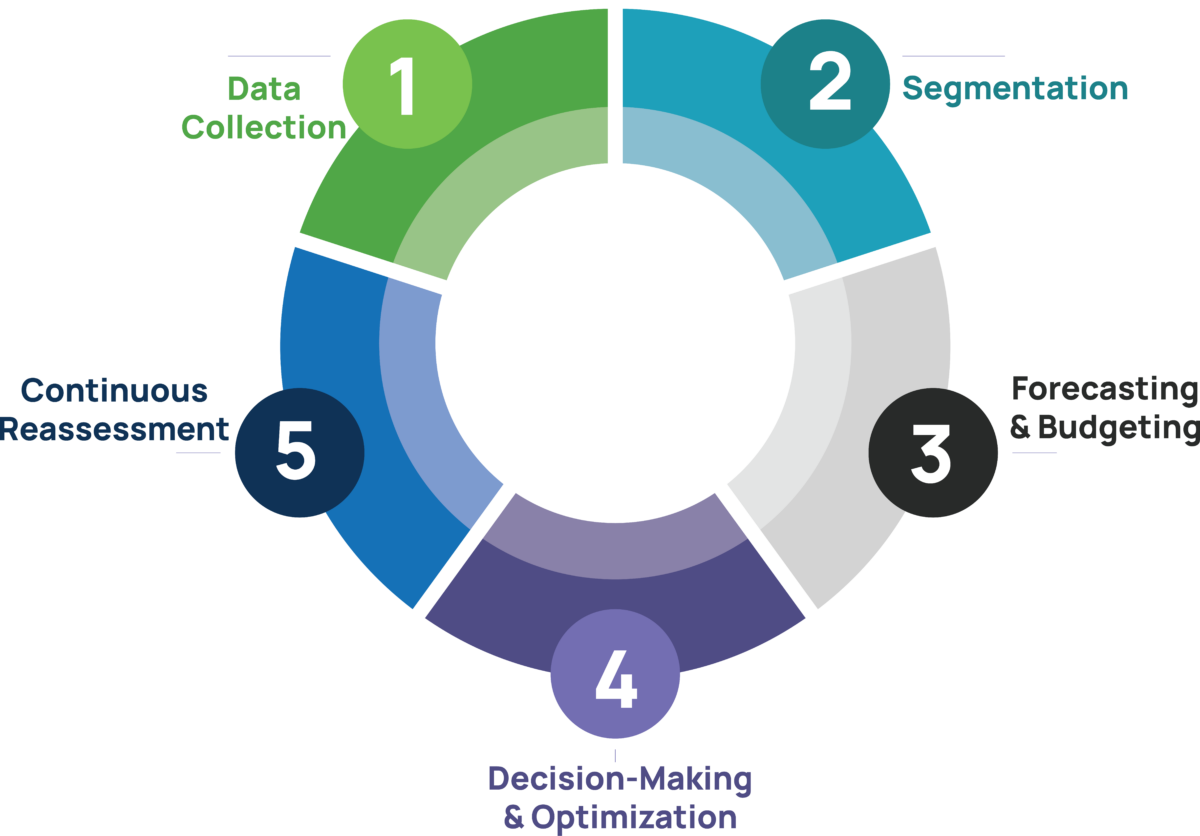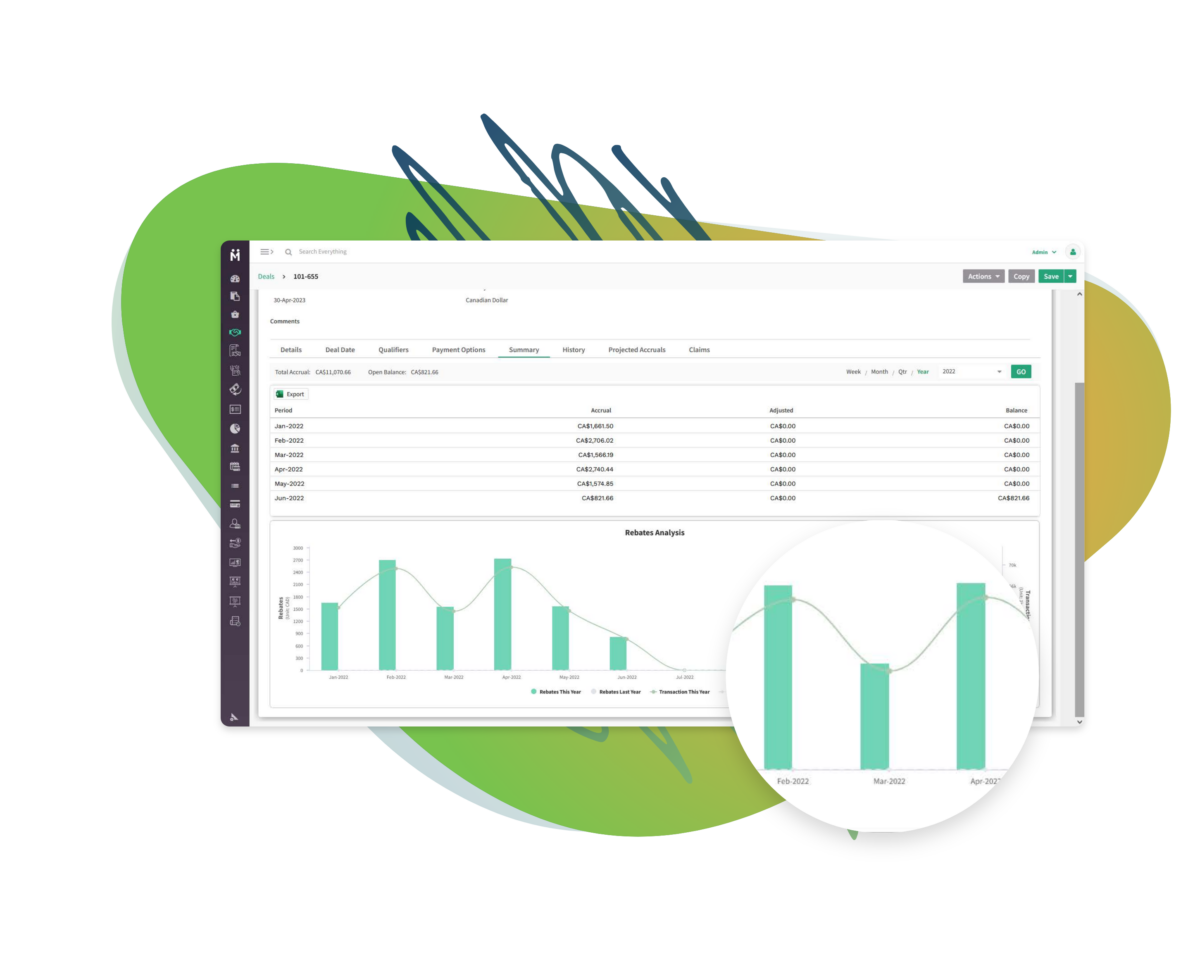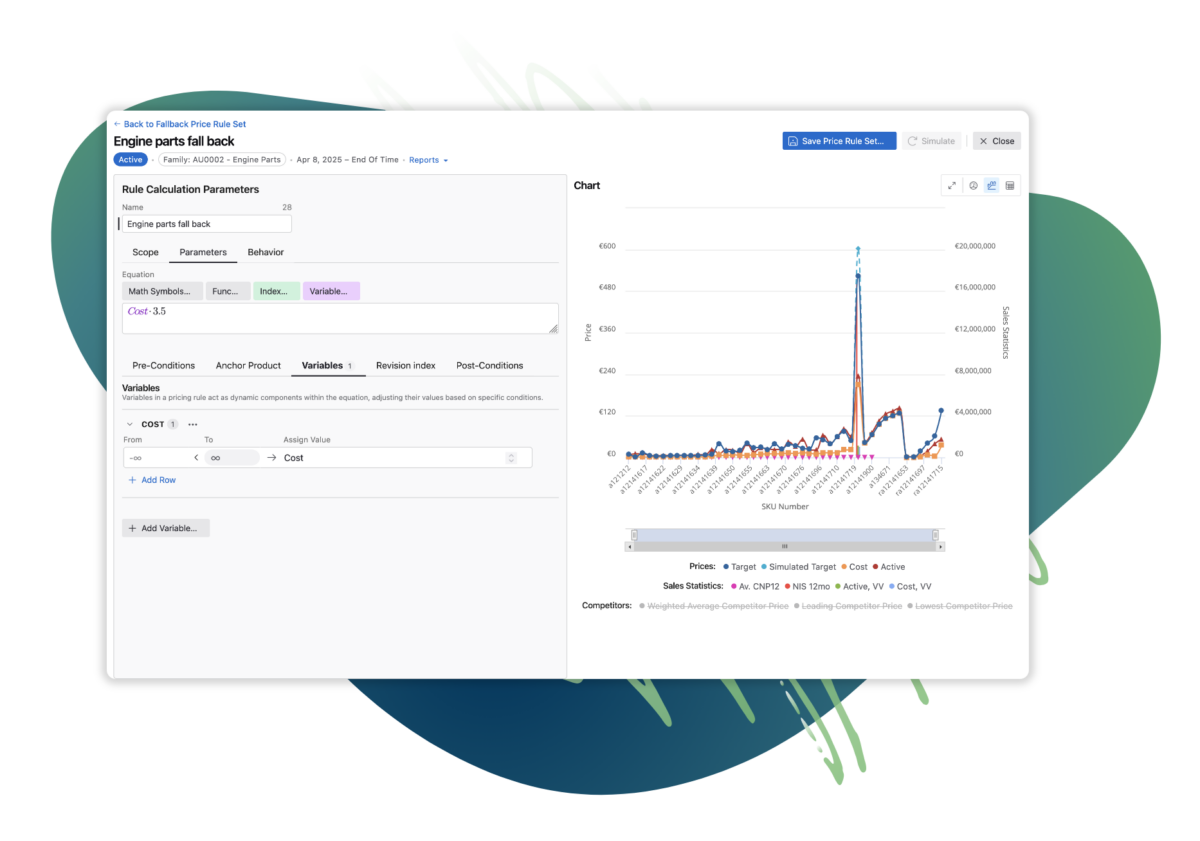
Revenue management is not just about pricing, it’s also about optimizing profitability. Saravanan Krishnakumar, Vice President, Rebates and Channel Management at Vendavo breaks down how companies can use data-driven revenue management strategies to drive growth and boost their bottom line.
Revenue management is a game-changer for modern companies, transforming the way they approach pricing. It all started with the airline industry and quickly spread to hotels, forever changing the landscape of these industries. And now, we’re seeing revenue management strategies and techniques jump into the B2B space, revolutionizing pricing across catalogs in a wide range of sectors.
Gone are the days of static pricing; dynamic, data-driven pricing is here to stay. By leveraging a host of inputs and algorithms, companies can now optimize prices to maximize top-line revenue. At Vendavo, we’re leading the charge in bringing revenue management to businesses of all sizes and helping them unlock their full potential.
What is Revenue Management?
Put simply, revenue management can be defined as a business strategy used to maximize revenue by selling the product at the right price, to the right customer at the right time. It’s based on a principal that demand for product or services is not constant but varies over time. Revenue is maximized by understanding the factors that influence demand, consumer behavior, market trends, competitive landscape and adjusting the price and other aspects of the product or services.
Revenue management, sometimes also called “revenue optimization“, is commonly used in industries like airlines, hotels, car rentals, and cruise lines where prices and availability fluctuate frequently based on supply and demand.
The principles of revenue management actually started in the airline industry back in the 1970s, after pricing was deregulated. Over the next few decades, it spread to other areas in travel and hospitality, and more recently, to retail and telecom.
Even though this practice can be applied to any industry, many businesses don’t use them because they lack information on their price elasticity. But applying effective revenue management can be a game-changer! It can help companies increase revenue, improve profitability, and gain a competitive edge in the market.
Why is Revenue Management Important?
Revenue management is important as it allows businesses to maximize their revenue by analyzing relevant data and techniques and identifying opportunities for creating additional revenue and boosting profits.
Companies that have a strong revenue management strategy can improve their finances, gain a competitive edge, make more informed, data-driven decisions, and move away from traditional guesswork.
Revenue Management Strategies from Vendavo
Effective revenue management balances customer needs with profit goals. Below, we highlight actionable strategies to help businesses optimize pricing, demand, and distribution in competitive markets.
Customer Segmentation
Divide your customer base into groups based on shared traits like purchase behavior, geographic location, or industry verticals. “Once you have identified your customer segments, determine the key value drivers for each group,” says Lehrasib Ali, Managing Consultant at Vendavo. “This includes identifying the factors that are most important to each segment, such as quality, convenience, or brand reputation.”
For example, manufacturers often tailor pricing for bulk buyers versus niche clients, while hotels segment leisure travelers from corporate guests. Automation tools simplify this process by analyzing historical data to identify high-value segments and personalize pricing dynamically.
Pricing Optimization
This strategy centers on adjusting the most effective pricing strategy for a product or service. It moves beyond cost-plus models by analyzing willingness-to-pay and perceived value. For instance, a chemical supplier might use value-based pricing for eco-friendly products, while a wholesaler employs psychological pricing (e.g., $9.99 vs. $10) to nudge bulk orders.
As Paul Sansom summarizes, “How a successful optimization strategy looks will vary from company to company, the core ingredients include a strong understanding of the customer base and access to data and real-time insights that ensure teams don’t have to rely on guesswork or hunches.”
Dynamic Pricing
With dynamic pricing, you can adjust prices in real-time using AI to respond to market shifts, inventory levels, and competitor actions. Hospitality businesses, such as luxury hotels, leverage this strategy during peak seasons or events to maximize revenue per available room (RevPAR). Similarly, retailers modify prices based on foot traffic or online demand signals to ensure margins remain healthy despite supply chain fluctuations.
“Your pricing teams set, manage, and share pricing strategies, but that process gets simpler and easier to scale with the right tools in place,” advises Aneesa Needel, Senior Product Marketing Manager at Vendavo. “Dynamic pricing solutions ensure the right price is always shared with your sellers and channels no matter the context.”
Demand Forecasting
This strategy relies on predictive sales analytics (algorithms, data, machine learning, etc.) to anticipate future outcomes as they relate to sales and revenue management. Accurate forecasts reduce overstock risks and align inventory with revenue projections. Marketing teams can predict sales trends using hybrid models like time-series analysis (for seasonal patterns) and bottom-up forecasting (aggregating sales-team insights).
David Anderson, Vendavo’s VP of Business Consulting, recommends that teams tap into historical data for insights. “Reviewing past sales data might reveal that demand for certain products spikes during specific months or that customers respond better to discounts at particular times of the year,” he shares.
Penetration Pricing
“Penetration pricing involves setting low initial prices to gain market share quickly, then gradually raising prices as you solidify your market position,” defines Mitch Lee, a veteran pricing expert at Vendavo. “Make sure you have a clear plan for when and how to raise prices. Let customers know the initial low price is a limited-time offer so they’re prepared when prices go up,” Lee advises.
Streaming platforms and electronics manufacturers often use this approach before upselling premium features. Time-bound rebates or tiered discounts help attract price-sensitive customers without eroding long-term margins.
Distribution Channel Management
This strategy focuses on optimizing how products reach customers (direct sales, wholesalers, online platforms, etc.) and creating revenue management efficiencies at scale. Israel Rodrigo, Business Consultant at Vendavo, drops several best practices for integrating channel management for maximum margins:
- Identifying the best channel partners for both current and future products, balancing direct and indirect selling efforts in a consistent way
- Choosing the most appropriate sales channels by target customer and product maturity
- Adopting robust incentive management planning processes that include the different key decision makers
- Tying compensation and commissions to rebate program effectiveness measures
For example, hotels manage channel conflicts by offering exclusive rates on their websites while reserving discounted tiers for third-party agencies. Likewise, food brands might allocate limited-edition items to high-margin boutique outlets while reserving staples for bulk distributors.
The Benefits of Revenue Management
By leveraging data-driven strategies to optimize pricing and inventory, companies can see significant improvements across a range of areas.
Here are some of the key benefits of revenue management:
- Increased revenue: Effective revenue management helps companies identify pricing opportunities and capitalize on them, leading to higher overall revenue.
- Improved profitability: By optimizing pricing and inventory levels, companies can reduce costs and improve profitability, ultimately boosting their bottom line.
- Reduced risk: Revenue management techniques can help companies manage risk by providing insights into market demand and pricing trends.
- Improved customer satisfaction: By offering dynamic pricing and tailored product offerings, companies can improve customer satisfaction and build loyalty.
- Increased brand loyalty: A customer-focused revenue management strategy can help businesses build brand loyalty by providing a personalized experience for customers.
- Gain competitive advantage: By using revenue management techniques to stay ahead of competitors, businesses can gain a competitive edge in the market and position themselves for long-term success.
5-Step Revenue Management Process
Revenue management transforms raw data into profitable decisions. This structured approach enables businesses to stay agile in shifting markets.

- Data Collection: Collect internal data like historical sales and customer behavior, and layer in external factors such as competitor pricing or economic trends. Hotels, for instance, track seasonal swings to anticipate booking spikes and adjust their revenue management strategies accordingly.
- Segmentation: Group customers by shared traits (like purchase frequency or industry) to tailor strategies. A parts producer might offer volume discounts to automakers and large accounts while increasing their pricing structure for retail.
- Forecasting & Budgeting: Predict demand using historical patterns and market trends. Retailers analyze holiday sales to stock inventory, later to allocate budgets toward high-potential products or regions.
- Decision-Making & Optimization: Act on insights by adjusting prices or reallocating inventory. Airlines, for example, use surge pricing for last-minute tickets while offering early-bird deals.
- Continuous Reassessment: Track metrics like profit margins and customer retention. Update strategies quarterly (or after significant disruptions) to stay aligned with market shifts.
This iterative process bridges data and action. It’s crucial that teams regularly reassess their processes and strategies to adapt to evolving customer needs and market conditions.
What’s the Difference Between Revenue Management and Pricing Strategy?
Revenue management and traditional pricing strategies achieve similar results but in principle they are quite different. Below are the key factors that differentiate revenue management from a pricing strategy:
- Demand: Track demand for a product or service over time and across different channels.
- Inventory: Track inventory levels and determine how many units of a product or services should be make available at what price points.
- Competition: Track competitor pricing and ensure that prices are set competitively.
- Costs: Track costs and ensure that prices cover costs and generate a profit.
On the other hand, typically when someone references a pricing strategy what they are referring to is setting prices based on costs or on what the market will bear.
What’s the Difference Between Revenue Management and Profit Management?
Revenue Management and Profit Management are two distinct but interrelated practices. Revenue Management is a strategy that involves maximizing revenue under specific circumstances, often by predicting and responding to changes in demand. Meanwhile, Profit Management considers all revenue-related decisions and takes a close look at costs, including seemingly insignificant ones, that can add up to impact profit margins.
Profit Management seeks to maximize profit on each individual sale by deepening the intelligence of pricing and customer insights, while also understanding the operational costs of offers. Revenue Management ensures there is enough supply to meet demand, and Profit Management ensures that each sale is optimized for maximum profitability. Together, they provide a holistic approach to optimizing a company’s financial performance. Read more about the difference between Revenue management and Profit Management here.
Common Revenue Management KPIs and Metrics
An effective revenue management strategy is nothing without measurement. Here are common KPIs and metrics our customers use to monitor performance:
Yield
Calculates the revenue earned per unit of inventory. To get this number, you simply divide the total revenue by the number of units sold.
Gross Revenue
The total revenue generated by the business before any expenses are deducted. On the other hand, “net revenue” is the revenue generated by the business after expenses are taken out.
CAC
Another important metric is “customer acquisition cost” or CAC, which measures the cost of acquiring a new customer. You can find this number by dividing the total cost of sales and marketing by the number of new customers acquired.
Customer Lifetime Value
“Customer lifetime value” or CLTV is another key metric, which measures the total revenue generated by a customer over the entire duration of their relationship with the business.
Revenue Management Software
Modern revenue management requires tools that unify pricing, forecasting, and customer insights. Vendavo’s platform empowers enterprises to automate complex workflows, align teams, and respond dynamically to market shifts. Here’s a breakdown of some of Vendavo’s solutions and their impact.


AI-Driven Price Optimization
Vendavo’s Pricepoint analyzes historical sales, competitor benchmarks, and customer behavior to recommend optimal prices. Machine learning identifies patterns in willingness-to-pay, enabling value-based pricing for niche markets. For example, pharmaceutical distributor Cencora used these insights to close revenue gaps and boost margins while adhering to strict customer agreements.
Intelligent CPQ for Agile Quoting
Configure complex products, apply customer-specific discounts, and generate branded proposals in minutes. Guided selling workflows reduce errors, while embedded margin calculators prevent unprofitable deals. Streamlined CPQ processes can translate to scaled efficiencies and revenue growth over time.
Dynamic Rebate Management
Automate rebate calculations, accruals, and payments across global channels. Vendavo’s Rebate & Channel Manager ensures compliance with tiered incentives, reducing disputes and manual errors. Genpak successfully delivered on their mission to better serve their customers by providing a way to systematically and effectively accrue and pay out rebates.
Margin Bridge Analyzer
Pinpoint profit drivers like product mix, volume, and discounting. This tool visualizes how external factors (e.g., raw material costs) impact margins, enabling proactive adjustments.
Watch a demo of Intelligent CPQ to explore how real-time pricing and guided selling accelerate profitable deals.
Best Revenue Management Examples
Revenue management principles have their roots in the travel and hospitality industry, where pioneers developed some of the most effective revenue management practices. As technology has advanced, location-based insights into supply and demand have become an integral part of these techniques. Today, travel and hospitality have fully embraced dynamic pricing, which optimizes prices to meet demand and enables effective forecasting and inventory management.
Of course, revenue management principles extend beyond the travel and hospitality industry. Companies across industries have implemented effective revenue management strategies and have seen significant improvements in revenue and profitability as a result. Some examples include:
- Distribution companies like UPS and FedEx leverage revenue management to optimize pricing and inventory based on real-time demand and market fluctuations, allowing them to capture more value.
- Manufacturers use revenue management to optimize pricing and inventory based on customer demand and market conditions, resulting in improved efficiency and profitability
- Shared ride apps use dynamic pricing based on airline arrivals, availability of drivers and traveler needs to drive revenue growth while improving customer satisfaction.
- Online marketplaces utilize sophisticated algorithms to access competitive pricing, consumer behavior, and product sentiment to optimize pricing and inventory decisions. Dynamic pricing helps them adjust prices based on real-time demand and competitor prices, while data and analytics enable them to identify the most profitable products and adjust inventory levels accordingly.
If you’re looking for tools and insights to optimize pricing, manage inventory, forecast future demand, and improve your bottom line, Vendavo is here to help. We’ve helped hundreds of manufacturers and distributors implement effective revenue management strategies, by providing real-time data and analytics, advanced pricing and inventory management, and a range of other capabilities to help our customers optimize revenue and profitability.
Summary and Key Takeaways
By analyzing relevant data and techniques, revenue management can help you identify opportunities for creating additional revenue while reducing risk and improving customer satisfaction and brand loyalty.
- Revenue management provides companies with numerous benefits including increased revenue, improved profitability, reduced risk, improved customer satisfaction, and increased brand loyalty.
- There are key differences between revenue management, pricing strategy and profit management.
- Some top revenue management strategies include dynamic pricing, price optimization, and incentive management.
Ready to Transform Your Revenue Strategy?
Vendavo’s AI-powered solutions simplify complex pricing, automate rebate management, and deliver real-time insights, turning data into profitable decisions. Designed for manufacturers and distributors, our platform scales with your needs while protecting margins in volatile markets.
Request a Demo to explore how intelligent CPQ, dynamic pricing, and rebate automation drive growth.
